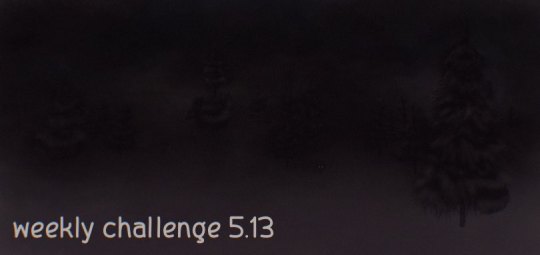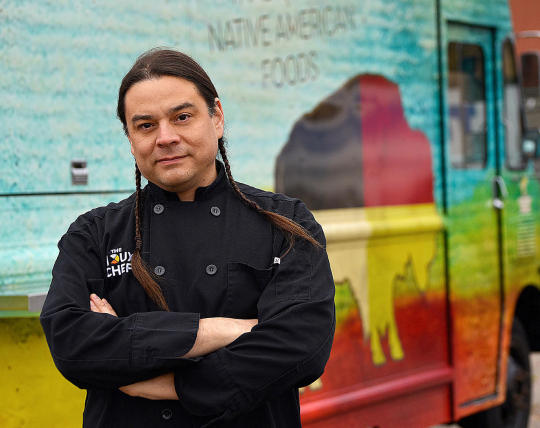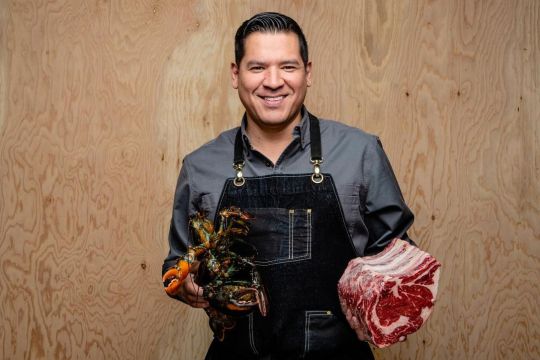#Moose hunting Ontario
Explore tagged Tumblr posts
Text
The Challenge and Thrill of Moose Hunting: A Wilderness Adventure
Moose hunting stands as one of the most challenging and rewarding pursuits in the world of big game hunting. These majestic creatures, the largest members of the deer family, offer hunters an unparalleled experience that combines skill, patience, and a deep connection with nature. From the rugged forests of North America to the vast wilderness of Scandinavia, moose hunting attracts enthusiasts from around the globe.
The allure of moose hunting Ontario lies not only in the pursuit of an impressive trophy but also in the immersive experience of navigating remote wilderness areas. Moose typically inhabit dense forests, swamps, and remote lake regions, requiring hunters to develop a keen understanding of their habitat and behavior. This connection with the natural world is a fundamental aspect of the hunt, often drawing hunters back year after year.
Preparation is key to a successful moose hunt. Hunters must be physically fit to traverse challenging terrain and potentially pack out hundreds of pounds of meat. Equipment choices are crucial, with many opting for high-powered rifles capable of ethical, long-range shots. Proper clothing and gear to withstand harsh weather conditions are essential, as moose hunting seasons often coincide with the onset of colder weather.
One of the most effective techniques in moose hunting is calling. During the rutting season, hunters use various calls to mimic the sounds of both bull and cow moose. The deep, guttural grunts of a bull moose echoing through the forest can send shivers down a hunter's spine. Mastering these calls takes practice and patience, but it can significantly increase the chances of attracting a bull within range.
Spot and stalk is another popular method, especially in more open terrain. This involves glassing vast areas to locate moose and then carefully planning an approach. The challenge lies in navigating quietly through often dense undergrowth, all while remaining downwind of the highly sensitive nose of a moose.
Conservation plays a vital role in moose hunting. Regulated hunting helps manage moose populations, preventing overgrazing and maintaining healthy ecosystems. Many hunters take pride in their role as conservationists, understanding that their license fees and activities contribute to wildlife management and habitat preservation.
The ethical aspects of moose hunting cannot be overstated. Responsible hunters prioritize clean, humane kills and proper utilization of the animal. A single moose can provide hundreds of pounds of high-quality, organic meat, often sustaining families for months. This aspect of self-sufficiency and connection to one's food source is a significant draw for many hunters.
While the physical and technical aspects of moose hunting are challenging, many hunters find the mental game equally demanding. Hours or even days can pass without a sighting, testing a hunter's patience and resolve. The ability to remain focused and alert in the face of monotony and harsh conditions is often what separates successful hunters from the rest.
The camaraderie of a moose hunting camp adds another dimension to the experience. Shared stories around the campfire, collaborative efforts in tracking and harvesting, and the mutual respect among hunters create lasting bonds and memories.
In conclusion, moose hunting offers more than just the pursuit of game. It's an adventure that challenges hunters physically and mentally, connects them intimately with nature, and instills a deep respect for wildlife and conservation. Whether it results in a successful harvest or not, the experience of moose hunting leaves an indelible mark on those who undertake this wilderness challenge. https://uchilakelodge.com/hunting/
#Walleye fishing Ontario#Fly in fishing Ontario#Fishing Resorts Ontario#Fishing lodges northern Ontario#Moose hunting Ontario#Walleye Fishing#Fishing lodges Ontario Canada#Fishing lodges#Fishing camps#Ontario fishing
0 notes
Text
Funny Friday -- "Look Mac, That Ain't No Moose" -- 1966
CLIPPED FROMThe Ottawa CitizenOttawa, Ontario, Canada08 Jan 1966, Sat • Page 83 THIS is a story of valor. It is the strange but true story of a Hereford bull, a photographer and me. But to fully understand our brave act we must first go back to that day in November when I was called into my boss’s office. “Jim,” he said, “sit down. I have a job for you.” “Great, Chief,” I said. “We are in the…

View On WordPress
#canadian press#Cows#funny#funny story#hereford#History#humor#humour#moose hunting#ontario#ottawa citizen#weekendmagazine
1 note
·
View note
Text

CHALLENGE: AU solo PARTIES: AU!Kyle and also his cousin LOCATION: Ontario, CANADA SUMMARY: What if Kyle never moved to Wicked’s Rest? WARNING: gun use, and please read below <3
For this (okay last) week’s AU I was wondering if Kyle would still be a werewolf if he never moved to Wicked’s Rest, and this is my answer to that. :) (But so seriously, there’s description of an animal attack and the injuries from an animal attack, and death, so please be so cautious when you continue reading, friends.)
An hour ahead of first light, bundled tightly and pressed against his cousin, Kyle sat in a tree stand. His butt was beginning to go numb and he had to take a leak, but every movement he made earned him an elbow to the ribs. He didn’t know why, it wasn’t like it was shooting light yet. It wasn’t his first hunt, either. He was older than his cousin by a few years, so he’d been hunting longer on top of it. Still, he kept his complaints to himself until the call of nature could no longer be ignored. He shifted in his seat again, moving to get up, and received another jab in the side.
“I have to piss,” he whispered, elbowing his cousin back.
“Now, Mahihkan?” his cousin asked, the disappointment evident in his tone, even as he fondly opted for Kyle’s middle name.
“Now, cvpon.”
He ignored the string of complaints, (“Why didn’t you go before we left? Make sure you’re downwind or you’ll spoil the whole day,”) and trudged through the snow downwind of the tree stand. The season was quickly drawing to a close, and his cousin hadn’t bagged his own deer yet. That wasn’t Kyle’s fault. He was a lousy shot, but if Kyle gave him a reason to blame him, his cousin would.
Muttering his own complaints, he stopped by a tree and began the chore of unbundling partway. He had no more than unzipped his coat when he heard the sound of crunching snow behind him. Krrmph. Krrmph. Kyle shook his head. Now his cousin was playing pranks, too?
“Can’t sneak up on me that easily,” he called, and the footsteps stopped short. He turned to see if he could see his cousin, even in the darkness of early morning. He saw nothing but the hazy form of trees reaching skyward, still and black. “Nice try.”
He fumbled with the zipper on his bibs, and again came the crunching of snow behind him. It was slow and steady, like your heartbeat on your pillow at night. Krrmph. Krrmph. Krrmph. “I can still hear you,” he called again, but this time the footsteps didn’t stop. Frustrated now, Kyle spun around to address his cousin, but again he could only see darkness around him. He stood still a moment, listening intently. He could almost see the form of his cousin crouched in the brush, steadily creeping forward. Krrmph, krrmph, krrmph.
“I see you, man. It’s not fuckin’ gonna work. You’re gonna scare all the deer off if you—,” but he was cut off abruptly by the shadowy form rushing at him and lunging. He had expected a bear hug tackle from his cousin playing around with him. He expected laughter and roughhousing. He did not expect teeth tearing at his coat. Down exploded from the lining of his coat, filling the beast’s mouth with nothing but feathers. This close up, Kyle could finally tell it was a wolf. It didn’t look quite right; there was something off about it that deeply unsettled him. His body was covered in goosebumps that had nothing to do with the cold air around them. Sputtering on its unpleasant mouthful, the wolf tried to regain its composure as Kyle wriggled out from beneath it.
The snow at this time of year was deep in Ontario, and drifting. His footsteps were clumsy as he tried to run through the knee deep drifts. The wolf was far more agile than he, in its element and hungry. With hunters picking off deer and moose, Kyle could empathize that the wolf had probably missed out on meals. The justification was lost as the animal pounced on him from behind. Kyle fell face first into the snow. It was so cold that it burned where it touched the glimpses of exposed skin on his face and neck. He tried to scream, but the weight of the wolf on his back had forced the air from his lungs. The only sound that escaped was a strangled sob.
Again the wolf tore at his coat and was met with more feathers. Angered, it slashed at his back, its claws rending layers of clothing to shreds. Kyle tried to crawl out from under the beast, but it held him in place. It was ripping at his clothes now as he struggled, and Kyle could feel the moist heat of its muzzle through the fabric of his shirt.
“Please,” he begged, breathlessly. “Please!”
But there is no forgiveness without the shedding of blood. Kyle screamed as much as he could, as the wolf’s teeth made contact with his now bare shoulder. The pressure of the monster sitting atop him was relieved as it began dragging him through the snow. He gasped, filling his lungs with much needed breath. It was too dark to see anything, but colors bloomed at the edge of his vision and his head swam as air circulated through him again. He screamed, this time loud and agonized, as the creature tugged him away. There was no good way to escape the grip it had on him without doing immense damage to himself.
A gunshot rang out in the air and both Kyle and the wolf flinched. The animal paused, mouth still attached to its newfound meal. Kyle screamed again with everything in him, and another gunshot followed. The wolf began scrambling, trying to drag him away faster. He struggled against it. He boxed the animal about the nose and pulled hunks out of its fur wherever he could reach. A third time a gun was fired. It had to be his cousin, but it was still so dark that there was no way he was taking aim. They were warning shots, but they were having the desired effect. The wolf was panicked, trying to grab Kyle in different spots to take its meal off and feast. He put all of his energy into thrashing and squirming. The beast tore into him haphazardly. His abdomen was flayed open. Where he tried to protect himself, his arms were bloodied. Whether it was the fight he put up, or the warning shots, the beast finally relented. It released him and took off, just another dark shape against the blanket of early morning darkness around them.
Kyle lay there, bleeding into the snow. His eyes were heavy. He could hear his cousin calling for him, and he could hear loud choking sobs in response that he was vaguely aware were coming from his own throat. Kyle was a thousand miles away from the cold and the pain. He could vaguely feel the sticky warmth of blood pooling beneath him. He could smell the metallic scent of it in the air. His cousin’s voice got no closer, staying distant and panicked. The hiccuping sobs began to quiet in the minutes that followed as his cousin frantically searched. It could’ve been five minutes, if could have been more, or it could’ve been an eternity before Kyle’s cousin would find him. A sense of serenity had enveloped him in that time. He was tired. It was still so early in the morning and he fought against sleep. Tears quietly raced across Kyle’s cheeks, dampening the hair by his ears. They were miles from home, miles from the closest hospital, miles even from their truck. His cousin called his name again and again, sounding farther and farther off in the distance.
“It’s okay,” he heard himself saying. “It’s okay.” And he quietly fell asleep.
4 notes
·
View notes
Note
For asks to know you better! 1, 2, 9, 27
1. Chipotle order?
There's no Chipotle location where I live (the maritimes isn't really "with it" sadly. We only just got a Popeyes and a Sephora very recently). The closest Chipotle would be somewhere in Ontario, so about a 2 hour plane ride from where I am. The menu looks pretty good though, I'd try the chicken quesadilla with a side of red chili salsa!
2. Thoughts on veganism?
There's quite a few! Vegan food tastes pretty good if it's made by someone who knows how to cook or if it came from a good restaurant. Having friends or co-workers who are vegan can be a great way to encourage yourself to eat more veggies too if you struggle with it (I do). Lots of people turn to it because they don't like the thought of killing and eating animals, especially because there's a lot of workplace and animal welfare issues with factory farming. I get where they're coming from, but food solidarity is more productive in the grand scheme of things because in reality, veganism was only made possible relatively recently and in places where there's dependable/affordable food imports all year around (and there's issues with that too, farmers aren't treated very well, especially in the global south. Over worked, underpaid...). Canada is a pretty good example of this. If you go waaay way up north, fruits and veggies are insanely pricey, so what makes more sense? Buying a single box of strawberries for 25$ or hunting a seal or whale to feed tons of people for a good amount of time? My own family in remote Newfoundland lives by the ocean and about an hour away from the nearest grocery store, so it makes sense to catch your own seafood and have a moose for the family to last the winter.
The vegans I know in person are thankfully civil about it. They don't talk down on "carnists" (idk why vegans online use that as an insult sometimes because honestly it sounds both funny and cool at the same time), or insist on feeding vegan diets to cats. Thank goodness
So basically: food is food. Eat what makes the most sense for you and your family to eat and whatever that is, never stop practicing gratitude towards your farmers and butchers or family members who can hunt. We'd all be worse off without them
9. Do you have a skincare routine (and how many steps is it)?
It's very, VERY diligent. I used to have pretty bad acne and I was on accutane for about a year after university 6 years ago. It's great stuff, but it can be hard on your body. To this day, sunscreen is still the first thing I put on when I wake up (although skin cancer alone should be your reason to wear it everyday no matter what. Especially if you live somewhere where healthcare isn't timely or affordable). Right now I use these to keep breakouts at bay. My skin is the best it's been in years.

27. What’s your favorite or go-to outfit?
Right now, it's a bright pink and gold silk robe with a hood. I have good pictures of it from the designer here:


And here's me with it on!


The designer repurposed the fabric from an old wedding dress, and it makes me feel all rosy and happy everytime I wear it. As if I was made part of an old love story
Although you know what, a friend of mine did tell me once that it reminded her of Homestuck. I don't know how I feel about that ☠
3 notes
·
View notes
Text
Hunting Property for Sale in Ontario: Tips for the Savvy Buyer
Ontario’s vast wilderness is a haven for hunting enthusiasts. From dense forests to open fields, the province offers diverse landscapes that support a variety of game, including deer, moose, bear, and waterfowl. For those looking to establish a permanent hunting base, finding the perfect hunting property for sale in Ontario can be a dream come true. Here’s a guide to help you navigate the process…

View On WordPress
0 notes
Text
Wednesday, October 09, 2024 Canadian TV Listings (Times Eastern)
WHERE CAN I FIND THOSE PREMIERES? THE INHERITANCE (BritBox) LA MÁQUINA (Disney + Star) ABBOTT ELEMENTARY (Global) 9:30pm BARGAIN BLOCK: NEW ORLEANS (HGTV Canada) 10:00pm
WHAT IS NOT PREMIERING IN CANADA TONIGHT? SECRET LIFE OF DIDDY (ABC Feed) EXPEDITION UNKNOWN (Premiering on October 10 on Discovery Channel Canada at 8:00pm) HOUSE OF VILLAINS (Premiering on October 10 on E! Canada at 9:00pm) LOST MONSTER FILES (Premiering on October 10 on Discovery Channel Canada at 9:00pm)
NEW TO AMAZON PRIME CANADA/CBC GEM/CRAVE TV/DISNEY + STAR/NETFLIX CANADA:
AMAZON PRIME CANADA STREE 2
CBC GEM THE CHOICE 2024 THE LONELIEST RACE
CRAVE TV SCARE TACTICS (Season 1)
DISNEY + STAR LA MÁQUINA (all episodes)
NETFLIX CANADA DECEITFUL LOVE (IT) INSIDIOUS INSIDIOUS: CHAPTER 2 INSIDIOUS: CHAPTER 3 LOVE IS BLIND: (Season 7) THE SECRET OF THE RIVER (MX) STARTING 5
MLB BASEBALL (SN360) 3:00pm: Guardians vs. Tigers - Game 3 (SN1) 5:00pm: Phillies vs. Mets - Game 4 (SN360) 7:00pm: Yankees vs. Royals - Game 3 (SN Now) 9:00pm: Dodgers vs. Padres - Game 4
NHL HOCKEY (SN) 7:00pm: Leafs vs. Habs (SN) 10:00pm: Jets vs. Oilers (SN1/SNPacific) 10:00pm: Flames vs. Canucks
BACK TO ROOTS (APTN) 7:00pm: Perry and Chef Denia do a visual hunt for moose; Chef Denia shares her moose hunting techniques and the best times to hunt; they forage for stinging nettle, wild cranberries and discuss tapping birch trees.
NBA BASKETBALL (TSN/TSN4) 8:00pm: Rockets vs. Thunder
THE KNOWING (CBC) 8:00pm: Tanya makes an unexpected discovery: two of her great uncles died at Shingwauk Indian Residential School; Tanya joins an indigenous delegation to Rome, looking for an elusive apology from Pope Francis.
THE PASSIONATE EYE (CBC) 9:00pm: The Loneliest Race
MARK MCKINNEY NEEDS A HOBBY (CTV) 9:02pm: Mark McKinney joins his hobbyist host and travels to Ontario's Kawarthas to spend two days living as a 14th century knight.
SECRET HISTORY (APTN) 9:00pm: An orphaned Mohawk girl rejects traditional values, embraces Christianity, faces expulsion and finds a profound spiritual connection with God.
TIA MOWRY: MY NEXT ACT (Slice) 9:00pm (SERIES PREMIERE): Newly single, Mowry navigates motherhood and her busy life while experiencing independence after working closely with her sister and being married.
AN OPRAH SPECIAL: THE PRESLEYS -- ELVIS, LISA MARIE AND RILEY (Global) 10:00pm: Oprah Winfrey sits down with Riley Keough, the granddaughter of the king of rock and roll, Elvis Presley, for an intimate conversation about her life, her mother Lisa Marie's life, and her famous family.
PREDATOR V. PREY (Nat Geo Canada) 10:00pm (SERIES PREMIERE): A forensic look at how lions hunt much larger prey, like buffalo and elephants, with new perspectives on the way these predators stalk, chase and kill.
GOD'S GRACE: THE SHEILA JOHNSON STORY (BET Canada) 10:00pm: Sheila Johnson retires from the Air Force at age 43 after being diagnosed with stage IV metastatic cancer. With the support of family and friends, she goes on to found an advocacy group for Black women and men diagnosed with the disease.
SO LONG, MARIANNE (Crave) 11:00pm: Marianne has to go to Norway, and Leonard comes along. The road trip through Europe brings them closer together, but in Oslo Leonard quickly becomes restless.
#cdntv#cancon#canadian tv#canadian tv listings#back to roots#the knowing#the passionate eye#mark mckinney needs a hobby#secret history#so long#mlb baseball#nhl hockey#nba basketball
1 note
·
View note
Text
Three men from Chatham-Kent and Essex have been fined thousands of dollars after shooting a moose from a motorboat while on a hunt in northern Ontario in October. According to a news release from the Ministry of Natural Resources and Forestry, on Oct. 14, 2022, conservation officers were conducting a remote moose enforcement flight and were stopped on Lac Seul, in the Kenora, Ontario, area, where a successful moose hunting group was contacted.
0 notes
Text
Cease and Desist letter demands cancelation of Ontario's non-native moose and deer hunt
A letter has been sent by the “14922000 CANADA ASSOCIATION” demanding that the Ontario Ministry of Natural Resources and Forestry “cease and desist” from issuing any “hunting tags or licences for deer or moose in Ontario due to the consequences of climate change in this region at this time.” The letter cites the needs for Indigenous people to rely on moose and deer for food subsistence or…

View On WordPress
0 notes
Text

"DEMAND INDIANS HALT SLAUGHTER OF MOOSE," Toronto Star. October 6, 1942. Page 30. ---- Must Observe Game Laws Outside Own Reservations, Province Insists ---- "Ontario won't permit abuse of the game laws concerning shooting of large game animals like moose by Indians outside their own reserve areas," D. J. Taylor, deputy minister of game and fisheries, stated today. At Ottawa a deputation of Indians is protesting that Indians throughout Canada face starvation unless this order is amended.
Mr. Taylor cited one case in which 17 moose carcases have been found out of season with only small portions used. Sometimes only tongue would be taken and other times only a little bit of the hide to make trinkets. A moose now is worth over $200 to Ontario from the tourist hunting point of view, he said. "Indians." said Mr. Taylor, "have the right on their reserves to take game and fish for their own use at all seasons, but other than on their game reserves they are subject to the law of the white man. In the more isolated sections the department has never insisted upon strict observance of regulations by Indians other than on furbearing animals.'
At Ottawa, Thomas Favell of Vermilion Bay, Ont., spokesman for the Indian delegation, said that "these provincial rules are a direct violation of ancient treaties between the Indians and the government." The chiefs told officers of the Indian department yesterday their wives were going hungry because they cannot adapt themselves to "white man's food." and said their papooses were suffering from malnutrition.
#ottawa#vermillion lake#game laws#regulation of hunting#indigenous rights#indigenous history#treaty peoples#settler colonialism in canada#violence of settler colonialism#hunting rights#illegal hunting#racism in canada#first nations#indigenous people#canada during world war 2#moose hunting#moose#first nations reserve#department of indian affairs
0 notes
Text
Maybe outline what is expected of the dogs from temperament testing, puppy-raising, training and skillsets? And what is allowed and what is prohibited?
Content Warning: hunting
Legal to hunt with a pack-dog in Alberta. It's interesting to see pack-dogs legally defined as a working dog and the unwritten implications behind the requirements. Especially since working animals and companion animals are often treated separately under the law.

— Wildlife Regulation, Alta Reg 143/1997. Retrieved February 17, 2023. WMU 400 to 446 is part of the Rocky Mountains. Hopefully gives context to why pack-dogs are allowed whereas elsewhere in North America, they're not.
50 feet is about 15 meters, which is reasonable since some hikers have a command "closer" (video, 14:05) when their dogs wander beyond 10 meters (33 feet).
It's kind of funny because a lot of Albertans travel to hunting areas with their dogs, only keeping them only in the camps or in the trucks since hunting with dogs are not allowed. Or because dogs are not legally allowed in the backcountry in certain wilderness areas. But the pack-dogs are with their humans.
In fact, in a blog series dedicated to legalizing pack-dogs in wilderness areas, there is one post [archived] which stated working pack-dogs are held to higher standard than recreational pack-dogs. British Columbia has a similar regulations, not as strict. But unlike Alberta, B.C. has a leash requirement. People do use working pack-dogs there. And there is a local manufacturer specifically dedicated for working pack-dogs and other pack-animals.

— 2022–2024 Hunting & Trapping Regulations Synopsis, pg. 12 [PDF, 16.1 MB, archived]
There's even a podcast episode about working pack-dogs in B.C.
Then there's Ontario which allows dogs for bear, moose and deer but not for elks (or wapiti). Tracking wounded animals with a leashed dog is always legal, even in regions with prohibits hunting with a dog.



— Hunting Regulations Summary 2021 • 2022 pg. 33 and pg. 47 [PDF, 14.1 MB, archived] Ted Kerasote mentions keeping his dog quiet and steady in Merle's Door: Lessons from a Freethinking Dog while living in the Rockies. And Lars Monsen (Norwegian) used his Alaskan sled-dogs during the summers as off-leash pack-dogs in several TV series. But Lars is not always consistent with his dogs' behaviours.
Based on forum posts and blog posts from people (eg. Indigenous folks, guides, trappers, reindeer-herders, sled-dog farms, conservation officers, wildlife researchers) relying on pack-dogs for their livelihoods, would assume these kind of skillsets would be useful:


— International Trial "Arbeit nach dem Schuss" (Work after the shot) [archived]


— Test Regulations for Association Test After the Shot (VPSO), pg. 38 — 39 [PDF, 1.43 MB, archived]
Apologies for quoting English translations of German hunt tests. Americans also talk about those qualities in their working dogs, but there is no independent governing body that isn't already part of an international organization.
Only quoting the above texts because stalking with your dog is not often mentioned in English, and most of the search results come back with sources from New Zealand (video, 4:43). Content warning for guns in the linked video. There's a lot more about what's expected of dogs in non-Anglocentric sources. Passing the gun-shyness test is already required in some breeds not currently being employed. And in several JTO and RAS, dogs which did not pass the MH-test (Swedish) nor the character test [PDF, 85.7 kb, archived] (Finnish) are either mentioned with names redacted or are directly named.
And there is a reaction test on the mechanical bear (Finnish) if one wants to know how a dog behaves during an encounter with a predator. There is an even a test examining how a dog reacts to being charged by an artificial moose (hoisted on a cable trolley) from the thickets. Thought the approval from the regulations is worth pointing out since the utility is very close to the original function of pack-dogs. And there's a fair amount of details written by folks legalizing pack-dogs what is expected of them.
Okay y’all. I’m doing some planning for the “How to Pack” Series and here’s the parts I’ve got so far:
What pack to buy/how to pick a safe pack
Fitting a pack to your dog
Introducing pack to new dog
Introducing weight
Working Up weight
Thinking maybe combining parts 4 & 5? Anything else you are curious about or want to know? I don’t know when the series will be coming, mostly bc I also want to be able to show different pack brands on the dogs. But I want your feedback!
#pack dog#working dog#hunting dog#working pack dog#temperament test#character test#dog training#legality#functional pack dog
33 notes
·
View notes
Text
Exploring Ontario's Premier Fishing Lodges: A to Canadian Wilderness
Ontario, Canada's most populous province, is renowned for its pristine wilderness, abundant lakes, and world-class fishing opportunities. For anglers seeking the perfect blend of adventure and comfort, Fishing Lodges Ontario Canada offers an unparalleled experience. From remote fly-in destinations to easily accessible drive-to resorts, these lodges cater to fishing enthusiasts of all skill levels and preferences.
Diverse Fishing Opportunities Ontario's vast network of lakes and rivers provides a habitat for a wide variety of fish species. Anglers can target prized catches such as walleye, northern pike, smallmouth bass, and lake trout. Many lodges specialize in specific species or fishing techniques, allowing visitors to tailor their experience to their interests. Whether you prefer trolling for lake trout in deep waters or casting for smallmouth bass in rocky shorelines, Ontario's fishing lodges have something for everyone.
Remote Wilderness Experience One of the main draws of Ontario's fishing lodges is the opportunity to immerse oneself in pristine wilderness. Fly-in lodges, accessible only by floatplane, offer a truly secluded experience. These remote outposts provide access to untouched waters teeming with fish, far from the crowds and distractions of modern life. The journey to these lodges is an adventure in itself, offering breathtaking aerial views of Ontario's rugged landscape.
Comfortable Accommodations While the fishing is undoubtedly the main attraction, Ontario's lodges also prioritize comfort and hospitality. Accommodations range from rustic cabins to luxurious lodges, catering to various preferences and budgets. Many lodges offer amenities such as hot showers, comfortable beds, and home-cooked meals, ensuring that anglers can relax and recharge after a day on the water.
Expert Guides and Services For those new to the area or looking to improve their skills, many Ontario fishing lodges offer the services of experienced guides. These local experts possess intimate knowledge of the waters and can significantly enhance the fishing experience. They provide valuable insights on techniques, locations, and seasonal patterns, increasing the chances of a successful catch.
Family-Friendly Options While some lodges cater primarily to serious anglers, many Ontario fishing resorts offer family-friendly experiences. These destinations provide activities for non-fishing family members, such as hiking, wildlife viewing, and water sports. It's an excellent opportunity for families to bond over shared outdoor experiences while still enjoying world-class fishing.
Conservation and Sustainability Ontario's fishing lodges play a crucial role in promoting conservation and sustainable fishing practices. Many lodges participate in catch-and-release programs and educate visitors about the importance of preserving fish populations for future generations. This commitment to conservation ensures that Ontario's waters will continue to provide exceptional fishing opportunities for years to come.
Seasonal Opportunities Ontario's fishing lodges offer unique experiences throughout the year. Summer is the peak season, with long days and comfortable temperatures ideal for fishing. Fall brings spectacular foliage and excellent fishing for species like muskie and walleye. Winter ice fishing is popular in certain regions, providing a thrilling cold-weather adventure.
Cultural Experience Staying at an Ontario fishing lodge offers more than just fishing; it's an opportunity to experience Canadian hospitality and culture. Many lodges showcase local cuisine, featuring fresh fish and regional specialties. Visitors can also learn about the area's history and the indigenous peoples who have fished these waters for generations.
In conclusion, Ontario fishing lodges provide a perfect blend of adventure, comfort, and natural beauty. Whether you're a seasoned angler or a novice looking to try your hand at fishing, these lodges offer an unforgettable experience in the heart of Canadian wilderness. https://uchilakelodge.com/
#Walleye Fishing#Fishing lodges Ontario Canada#Fishing lodges#Fishing camps#Ontario fishing#Moose hunting Ontario#Fishing lodges northern Ontario#Fishing Resorts Ontario#Fly in fishing Ontario
0 notes
Photo

SPECTER MOOSE- MAINE
Among the pines, an apparition looms. Towering twice the height of a man, the beast has the form of a moose, but is far bigger than any ordinary member of Alces alces. Its coat is deathly white. Its antlers spread wide as outstretched arms, pronged with over two dozen sharp points. Is it a ghost? A spirit of the forest? Or perhaps it is merely an ordinary- if impressive- natural mutation.
The first recorded sighting of Maine’s spectral moose occurred in 1891 when hunting guide Clarence Duffy spotted the creature around Lobster Lake. A year later it was seen again by a sportsman from New York who shot at it, only to be chased down and nearly trampled by the vengeful beast.
Regular sightings occurred for several decades. Witnesses described the moose as being white or light gray, with some even claiming that it glowed dimly. It was said to be about 10-15 feet high at the shoulder, much taller than the 8-10 foot shoulder height of an average moose. Its antlers were said to be 10-12 feet wide and festooned with up to 22 prongs- much larger and more complex than the 4-6 foot spread of a regular moose. Some eyewitnesses claimed that the moose would actually vanish into thin air right in front of them.
Some have suggested that the animal was albino. Albino moose have indeed been documented many times, but their eyes are pink or violet, while the eyes of the spectral moose are said to be brown. Albinism would also not explain the creature’s tremendous size and enormous antlers.
Its possible the spectral moose had a condition similar to the Kermode Bears of British Columbia, also known as Spirit Bears or Moksgm’ol in the language of the Indigenous Kitasoo, a tribe of the Tsimshian people. Although these bears have white fur, their eyes and skin do have pigment. The white coloration is due to a recessive gene that stops melanin from being made only in the fur, a condition called leucism (as opposed to albinism, in which all pigmentation is lost in all tissues).
In fact, population of white moose are well-known to inhabit the woods around the town of Foleyet in Ontario. Like the Moksgm’al, these moose are not albino, instead possessing a recessive gene that makes their coats a grayish-white. Its quite possible that Maine’s spectral moose had a similar genetic condition, though again the creature’s alleged great size, and its seeming ability to disappear into thin air have not been fully explained. Perhaps eyewitnesses, startled by the sight of such an otherworldly-looking animal, exaggerated their descriptions.
SOURCES
An article from New England Folklore about the Spectral Moose
An article from Mysterious Universe about the Moose
An article from Lumberwoods.org
A Smithsonian article about the white Moksgm'ol Bear
Ontario's white moose
A 1911 article from the Sacramento Union about the Specter Moose
A post from legendsofamerica.com about the Specter Moose
56 notes
·
View notes
Text
National Native American Heritage Month- Some Chefs You Should Know About
During November, we celebrate #NationalNativeAmericanHeritageMonth. Over the course of the month, we take the time to celebrate the culture, accomplishments, and contributions of people who were the first inhabitants of the United States. We decided to highlight a few Indigenous chefs to kick off the month.

Sean Sherman, Oglala Lakota
Chef Sherman is one the most world-renowned indiginous chefs today. He founded The Sioux Chef in 2014, an organization committed to revitalizing and sharing Native American Cuisine from Alaska, to North America, and Mexico through culinary and culture education. Chef Sherman is a James Beard award winning chef, and has opened a restaurant in Minneapolis called Owami. Chef Sherman and his team aim to reintegrate Native American cuisine into modern American culture through projects like the Indigenous Food Lab. To check out some of Shermans recipes, you can find his cookbook here: https://www.upress.umn.edu/book-division/books/the-sioux-chef

Hillel Echo-Hawk, Pawnee and Athabaskan
Chef Hillel Echo-Hawk if the founder and chef of Birch Basket catering business. Chef Echo-Hawk provides catering and private chef services, with menu’s consisting of pre-colonial, Indigenous ingredients, paired with both traditional and modern techniques, and the stories of the people and the land that the food tells. Hillel focuses on restoring and protecting indigenous foodways. She is also a proud member of the I-Collective, a group of indgeneous chefs, activists, herbalists, seed, and knowledge keepers.

Kristina Stanley, Red Cliff Lake Superior Chippewa
Pastry chef and food activist Kristina Stanley based in Madison, WI is a member of the Lake Superior Chippewa tribe where she runs both Abaaso Foods, a plant-based food company, as well as Brown Rice and Honey, a wholesale and catering company. Chef Stanley’s mission is to “share a rich tribal history through food,” where at Abasso Foods she focuses on producing healthful foods through tribally sourced ingredients. Stanley is has also worked with I-Collective, the Intertribal Agricultural Council and the Slow Food Turtle Island Association on matters such as indgenenous food sovereignty and tribally sourced ingredients.

Brian Yazzie, Diné
Chef Yazzie was born in Dennehotso, Arizona which is located on the Northeastern part of the Navajo Nation. He focuses on bringing together local indigenous ingredients from the streams, rivers, and forests to revitalize healthy indigenous cuisine. He combines ancestral knowledge with modern techniques. To read more check out his website, https://www.yazziethechef.com/.

Rich Francis, Tetlit Gwich’in and Tuscarora Nations
Chef Rich Francis was the first indigenous chef to place on Top Chef Canada, and has been a vocal advocate for protecting indigenous hunting practices in Ontario. He has spoken out against government regulations that restrict the hunting of wild game that have been vital to local tribes’ cuisine for centuries, mainly narwhal, moose, beluga, and sea lion. Chef Francis acknowledges the Indigenous trauma associated with food, especially in northern Canada where food prices are expensive. Chef Francis’s goal is to “pull back that veil of colonialism and try to find the positives and carve out our culinary identity.”
Do you have some Indigenous dishes that you want to try or share? If so, tell us about it in our ProStart Virtual Lounge or add a photo on Instagram with the hashtag #MadeInProStart.
7 notes
·
View notes
Photo
Do...do people not know that moose ranges much further then the pacific northwest?? Like...just north. They are all over northern Canada, Alaska, and even in Labrador, Newfoundland, and the maritimes. They're everywhere.

It’s a beautiful day in the Pacific Northwest, and you’re an unstoppable killing machine from the Pleistocene epoch that Death forgot.
#like my inlaws hunt them in northern Ontario....that is not northwest.#i get it..it's a joke. and i appreciate that. but moose have a much bigger range.#i saw my first Moose when i was in Nova Scotia on the cabot trail.#that's east my friends.
92K notes
·
View notes
Link

Excerpt from this story from Sierra Club:
In 2014, extreme cold encased Lake Superior almost entirely in ice. Wolves ambled across new ice bridges to Michipicoten Island and the Slate Islands, which together held a population of around 1,000 caribou. By 2018 the wolves had whittled the herds to just 15 on Michipicoten and two on the Slates, both males. Prodded by wildlife advocates to do something, the Ontario government conducted emergency airlifts that winter to save the Michipicoten caribou and restart modest herds on the Slates, from which wolves by then had vanished, and on smaller, farther-from-shore Caribou Island.
Wolves may have been the immediate cause of death, but it was generations of logging, mining, and industrial development that have pushed Lake Superior’s caribou to the brink of extirpation. Climate change is also a factor. Ice bridges were once more common, allowing both caribou and predators to move fluidly between islands and the coast. But warming temperatures have driven a decline in Superior’s ice cover, isolating herds and making them more vulnerable.
Today the entire population sits at maybe 60 animals, says Gord Eason, a retired Ontario government biologist. That tally includes around 30 caribou on the Slate Islands. It includes a herd of about 20 that, if it grows much, could easily outstrip Caribou Island’s food supply and starve. And it includes Eason’s generous estimate of around 10 animals along the coast; it’s been more than four years since aerial winter surveys turned up evidence of caribou on the mainland. He and others now suspect that caribou sign reported in earlier surveys may in fact have been from whitetail deer.
“We are very concerned that the Ontario government would not act in time, if at all,” Eason says. “If we lose the population around Lake Superior, then the next-furthest-north caribou become the southern end of the range. Then a little group of them will become isolated somehow, and they’ll disappear. It just keeps going and going. That is the process of extinction.”
The animals around Lake Superior are boreal woodland caribou—a subspecies of Rangifer tarandus, which includes reindeer, barren-ground caribou that roam the Arctic tundra, and woodland caribou in the mountains of Alberta and British Columbia. They were never very abundant—their survival strategy in boreal forests is to avoid predators by being scarce—but thousands of them once slunk through the region’s dense woods, hidden bogs, and rocky islands. In the 1800s, however, loggers began cutting old-growth forests laden with lichens that caribou like to eat, replacing them with brushy young woods better suited to moose and whitetail deer. This abundant new prey attracted more wolves, which used roads and other manmade corridors to more efficiently hunt moose, deer, and caribou alike. The deer also brought with them a parasitic brainworm harmless to them but lethal to caribou. By the late 1800s, industrial development had opened up a gap that now stretches 60 or 70 miles between the Lake Superior caribou and herds to the north. Today caribou are present only fleetingly if at all in this range, bureaucratically known as the “discontinuous distribution.”
4 notes
·
View notes
Text
Eastern Wolf - Canis lupus lycaon or Canis lycaon


The Eastern wolf, also known as the timber wolf, is native to the forests of the Great Lakes region and Southeastern Canada. It is considered either a unique subspecies of the gray wolf (Canis lupus lycaon) or a completely different species (Canis lycaon). There is a lot of debate surrounding the genetics of the timber wolf. Many different studies have suggested that the Eastern wolf is actually a genetic mix of the gray wolf and coyotes, leading to the debate. A study in 2016 found that Great Lake wolves had 25% coyote ancestry and Algonquin wolves had 40% coyote ancestry. Other studies have found that the wolf originally separated from a common ancestor with the wolf over 1 million years ago. There are even some who conclude that the Eastern wolf is the same species as the red wolf (Canis rufus). According to the mammalogist W. Christopher Wozencraft in the third edition of Mammal Species of the World in 2005, the Eastern wolf was still classified as a subspecies of the gray wolf (this is also what Wikipedia classifies them as). According to LiveScience, in October 2012 U.S. Fish and Wildlife Service scientists published a study in the journal North American Fauna stating that the Eastern wolf was a separate species and not a subspecies. The Nature Conservancy of Canada also considers them a different species. There are two different forms of timber wolves. The larger form is the Great Lakes wolf, found in Minnesota, Wisconsin, Michigan, southeastern Manitoba, and northern Ontario. The smaller form of wolf is the Algonquin wolf in Eastern Canada. In 2016, the Committee on the Status of Species at Risk in Ontario recognized the Algonquin wolf as a separate species from the gray wolf and concluded they were different than the Great Lakes wolf.
Timber wolves can be of different colorations, although they are typically reddish-brown or grayish-brown with a creamy flank and chest. They often have a black-grey nape, shoulder, and tail. Timber wolves have a faint red color behind their ears. As they grow older they get darker, black fur. These wolves are similar to the red wolf in size, being bigger than a coyote and smaller than a grey wolf. This is believed to be due to environmental adaptations rather than their genetics. They weigh approximately 50 - 70 lbs, males being larger. These wolves typically live in packs of 3 - 6 adult wolves, hunting together. They primarily prey on white-tailed deer and beaver, and have been known to hunt moose as well. Despite being carnivores, timber wolves will forage for blueberries in the summer months.
All information was found from Wikipedia and here [2] [3]. Images are not mine.
Bonus image:

8 notes
·
View notes